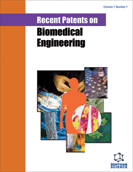Abstract
This paper presents and discusses a number of significant seminal patents on surgical correction of myopia, hyperopia and presbyopia. These patents essentially describe the devices and systems proposed to correct vision in the sense of ability for correct focusing on an image by correcting the eye length and the corneal curvature. In these developments the pioneering works of Helmholtz (Near Vision Accommodation Theory), Schachar (SASI, Schachar Accommodative Scleral Implant), Silvestrinin (INTACS, Keravision, intrastromal corneal ring (ICR)), Hood and Mendez (CK, Conductive Keratoplasty) and Shahinppor, Soltanpour and Shahinpoor (Active Scleral Bands, Bionic Vision) have been acknowledged and reported. Discussed are also surgical corrections of human eye refractive errors such as presbyopia, hyperopia, myopia, and astigmatism by using transcutaneously inductively energized artificial muscle implants to actively change the axial length and the corneal curvatures of the eye globe (active scleral bands) to correct vision refractive errors. Further briefly reviewed are active, electrically controllable and implantable artificial muscle systems that can be used in such surgical corrections. These polymeric artificial muscles can be integrated with or sutured to the body organs and tissues. In particular, they can be sutured to the body tissues and organs as implants to be transcutaneously inductively energized to actuate. These implants can induce enough accommodation of a few diopters, to correct presbyopia, hyperopia, and myopia on demand. In some preferred patent embodiments, the implant comprises an active sphinctering smart band to encircle the sclera, preferably implanted under the conjunctiva and under the extraocular muscles to uniformly constrict the eye globe, similar to a scleral buckle band for surgical correction of retinal detachment, to induce active temporary myopia (hyperopia) by increasing (decreasing) the active length of the globe. In another embodiment, multiple and specially designed constrictor bands can be used to enable surgeons to correct astigmatism. This review does not review the patents in connection with LASIK (Laser-Assisted in Situ Keratomileusis) and Excimer laser, as there are many reviews available on such developments. However, the pioneering works of Blum, Srinivasan and Wynne (Excimer Laser, Ablative Photodecomposition (APD), (US Patent 4,784,135, issued November 15, 1988)) and Professor Ioannis Pallikaris of University of Crete, Greece who was a pioneer in performing initial LASIK surgery should be acknowledged.
Keywords: Myopia, hyperopia, presbyopia, scleral implants, SASI, ICR, CK, LASIK, IOL, CAPS, artificial muscles, bionic vision, crystalline lens, limbal rings, zonular minibridge implants, Silvestrinin, Keravision, Photodecomposition
 5
5

